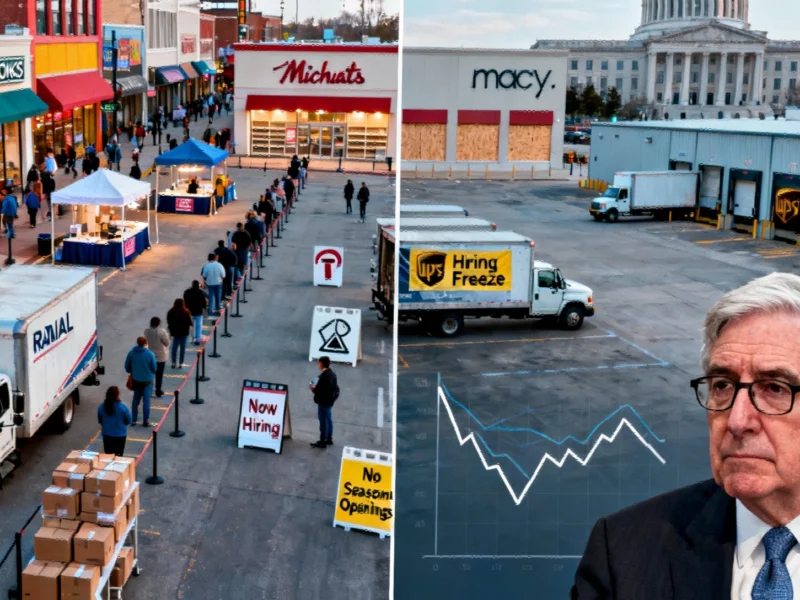The Physician’s Burden
Dr. Brian Moreas represents a growing concern among American healthcare providers—the increasing difficulty in delivering comprehensive care amid systemic workforce shortages. What began as a mission to follow in his family’s medical footsteps has transformed into a daily struggle against an overwhelmed system. His practice in Boca Raton, Florida, once focused on patient treatment, now consumes valuable hours navigating specialist referrals for geriatric care, psychiatry, endocrinology, and rheumatology—specialties experiencing critical shortages.
“Instead of meeting and treating as many patients as I can, my hours are often clogged with referrals to geriatric specialists which are increasingly hard to find,” Dr. Moreas explains. The situation creates a domino effect: patients discharged for home care frequently return when care workers prove unavailable, further straining an already packed schedule.
The Immigration Equation
Recent policy shifts have accelerated what experts call a “silent exodus” of foreign-born healthcare workers. Since the 2024 election, the Trump administration has implemented several immigration reforms, including substantial fee increases for H-1B visas, proposed caps on international students, and enhanced vetting procedures for green card applicants. These measures have produced their intended demographic effects—America’s foreign-born population declined by over one million people in the first half of 2025, representing the steepest drop since the 1960s.
The consequences extend beyond raw numbers. As industry developments in technology sectors demonstrate, skilled labor shortages create ripple effects throughout the economy. The healthcare sector faces particular vulnerability because immigrant workers disproportionately fill high-demand, lower-compensation roles that domestic workers often avoid.
Geriatric Care: The Perfect Storm
America faces a demographic collision course: the population aged 65 and older is projected to grow from 58 million in 2022 to 82 million by 2050, while the pool of professionals trained to care for them shrinks. “There’s a huge gap in geriatric care,” Dr. Moreas notes. “I don’t talk to any medical students who say, ‘Oh, I want to go into geriatrics when I get out.’ Everybody says, ‘I want to go to dermatology or orthopedics.'”
This specialty preference mismatch compounds existing shortages. While human-centric approaches to system design gain traction in other industries, healthcare struggles to apply similar principles to workforce development. The Baker Institute study reveals a telling trend: as total nursing care facility workers declined from 1.8 million to 1.5 million between 2007 and 2021, the proportion of foreign-born workers in these facilities increased to 18.21%.
Economic Consequences and Workforce Realities
The American Enterprise Institute projects that current immigration policies could shrink U.S. GDP by 0.3% to 0.4% in 2025 due to negative net migration. Meanwhile, economic warnings from financial leaders highlight broader concerns about skilled labor shortages.
In healthcare, the statistics reveal a stark picture: foreign-born workers now constitute 16.52% of the healthcare workforce, up from 14.22% in 2007, precisely as the overall workforce shrinks. These professionals are also more likely to work in underserved regions and in specialties with the greatest shortages.
Dr. David Shusterman, a New York urologist who emigrated from the Soviet Union in the 1980s, observes the mathematical impossibility of the current situation. “Our medical schools are filled with foreign-born people,” he notes. “There’s a lot of positions that need filling right now—it’s hard to find a urologist, hard to find other specialties.”
Policy Responses and Alternative Solutions
The White House maintains that domestic talent can fill healthcare workforce gaps. Spokeswoman Abigail Jackson points to “over one in ten young adults in America” who are “neither employed, in higher education, nor pursuing some sort of vocational training” as potential recruits.
However, retraining domestic workers for healthcare roles presents its own challenges. As infrastructure crises in other sectors demonstrate, system-wide shortages require comprehensive solutions rather than stopgap measures. The dual crisis facing American healthcare involves both quantitative shortages and qualitative mismatches in specialty distribution.
The Global Competition for Talent
Dr. Moreas identifies another emerging concern: the United States may be losing its competitive advantage in attracting global healthcare talent. “Other countries are actually economically starting to do better and it may be more lucrative,” he observes. “Once upon a time it was a very good lifestyle to come to the United States, but now there are so many other countries that people can choose from.”
This global competition occurs alongside strategic shifts in how organizations secure specialized talent. Dr. Shusterman advocates for clearer immigration pathways for needed medical specialties: “My suggestion to the immigration department is to be much clearer about [saying] ‘This is what we need, if you study in these fields you have a clearer pathway.'”
Looking Ahead
The healthcare workforce crisis represents a fundamental challenge to America’s ability to care for its aging population. With policy developments in various sectors influencing labor markets, healthcare stands at a critical juncture. The solutions will require balancing immigration reform, domestic workforce development, and recognition of healthcare’s evolving demographic needs.
As Dr. Moreas concludes: “Our aging population is definitely increasing at a faster rate than our ability to take care of them. I don’t see that changing anytime in the near future.” Without strategic intervention, America’s healthcare system may face increasingly difficult choices about who receives care—and who provides it.
This article aggregates information from publicly available sources. All trademarks and copyrights belong to their respective owners.
Note: Featured image is for illustrative purposes only and does not represent any specific product, service, or entity mentioned in this article.



